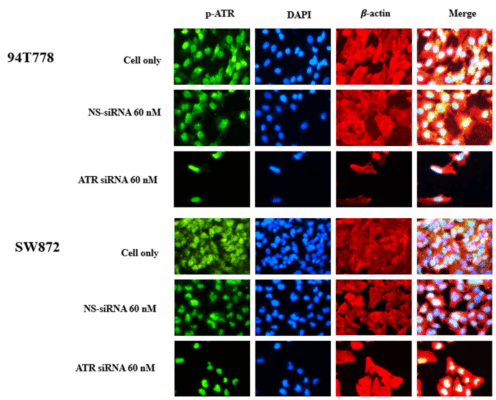Research Highlights
Knocking Down Doors to Find Cancer Therapies Using Anti-Kinase Strategies

Institutions:
University of South China, The University of Miami, University of Southern Califormia, The Ohio State University, The Ohio State University Wexner Medical Center, and University of California
Team:
Cui, J., Dean, D., Hornicek, F.J., Pollock, R.E., Hoffman, R.M., and Duan, Z.
Application:
3D cell culture
Disease Model:
Liposarcoma
Hydrogel:
VitroGel® 3D
The use of a 3D cell culture was shown to confirm the ability of anti-kinase strategies, such as drug inhibition and siRNA knockdown, in liposarcoma cell lines.
One promising strategy to combat cancers that are recalcitrant to standard chemotherapy is to target genes or metabolites on which tumors are differentially dependent. Liposarcoma is one type of malignancy for which this approach may be essential, given the high prevalence of lethal, inoperable variants. In these, and other tumors, there can be a dependency on protein kinases to proliferate. Ataxia-telangiectasia and Rad3-related (ATR) is a serine/threonine kinase that is required to ensure proper DNA replication and thus is particularly needed for the rapid growth of liposarcoma tumor and hence an attractive target for drug therapy. In fact, overexpression of the activated form of this protein has been reported in various malignancies, possibly a reflection of their hyperproliferative states.
However, to date, the levels of activity and expression of ATR in liposarcoma cell proliferation have been understudied. The authors of this study sought to shed light on the molecular and cellular behavior of this gene/protein through in vitro assays of migration, the degree to which the cells could form clones, and susceptibility to siRNA-mediated gene knockouts.
A global team of researchers, coordinated from the University of Miami School of Medicine first examined liposarcoma tissue in an immunochemical assay to determine expression levels of ATR. Then they grew liposarcoma cell lines in laboratory culture in order to proceed to siRNA knockdown and cell proliferation assays. To create cell culture conditions that best mimicked the in vivo environment, the authors also grew the cells in 3D culture, using VitroGel® 3D from TheWell Bioscience. The authors created spheroids from the liposarcoma cell lines using this medium distributed in 24-well microtiter plates with a density of 20,000 cells per well. In this context, a wound-healing assay could evaluate the effect of both siRNA knockdown and the selective ATR inhibitor drug VE-822 on cell migration. They found, through the immunohistochemistry assay, that ATR was overexpressed in nearly all liposarcoma specimens, and that, through the 3D cell culture experiments, both siRNA knockdown and drug-delivered inhibition were efficacious in suppressing cell growth and migration. These data demonstrate the power of 3D cell culturing using VitroGel® to provide a suitable assay environment in which to study promising anti-tumor therapeutic strategies.


